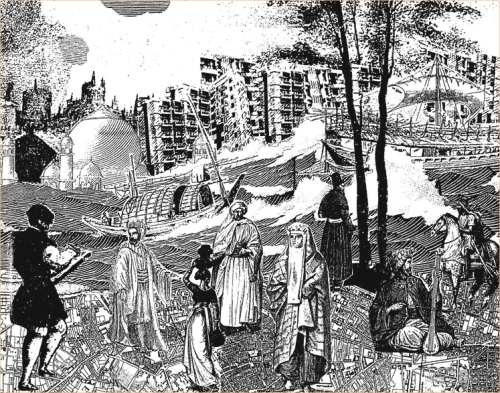 |
|
 |
|
 |
|
 |
|
Dhaka is almost an island
But who knows it?
Dhaka is a child of the Buriganga, and yet it turns its back to the fundamental reality of being part of the world's most dynamic hydrological system. Too few planners, far less city fathers, and even the people of the city tend to forget that Dhaka is a tender
- The river! The river!! The riverfront should be recovered, and now!
- Develop both sides according to the features of the land and community
- Introduce widespread river transport like ferries, water taxis, and commuter boats
- Maintain wetlands, restore back some canals, take away pollutants, delineate flood zones and maintain them at any cost
- An ecologically conscious Dhaka is an alive Dhaka
- Make Dhaka a “Bengali” city
land-mass framed by three rivers and a fluid landscape. Dhaka cannot forget its genealogy, for that forgetfulness will be reciprocated by calamities and other dreadful environmental effects. An audacious vision for Dhaka has to begin from where Dhaka began at the edge of the water.
How many of us realise Dhaka is almost like an island framed by three rivers, the Buriganga, the Turag, and the Balu? How many remember that canals used to crisscross older Dhaka? A ten-minute ride outside Dhaka still shows the aquatic reality of the land flood plains and canals completely girdle the city. A plan for Dhaka has to adopt that as a supreme consideration, and it is that idea which can make Dhaka a “Bengali” city, distinctive from any other.
A radical reclamation of Buriganga river and its banks on both sides is crucial for an economic, transport and cultural reinvigoration of Dhaka. The river can become a sustainable life-blood, and the riverfront a much more organized area providing renewed recreational, civic, economic, and transport facilities for the whole city in a way never witnessed before. Frame the river's edge. Take the launch terminal elsewhere; make many terminals along the water. Shift the tanneries. Some canals could be restored for both navigation and drainage as well as promenading along the banks (if roads need to be dug up that were built over the canals, let it be). Like the horse-racing in Sienna, the bull-chase in Spanish towns, or the Sanja Matsuri festival in Tokyo, the now decimated boat racing (“nouka baich”) could be revived into a spectacular international event. The banks of the Bosphorus in Istanbul was once choked up by foul industries and other accretions until a brave mayor arrived to clean them all up to reveal what is now a green jewel for the city.
Working with the river means working with a total environmental relationship. The rivers, the wetlands, the flood plains, the eighty inches of rain per year, the drainage are all tied in an intricate relationship. Make malls if you will, but do not forget the wind and the rain. Dhaka is a deltaic city; it cannot be developed by economic desires alone.
